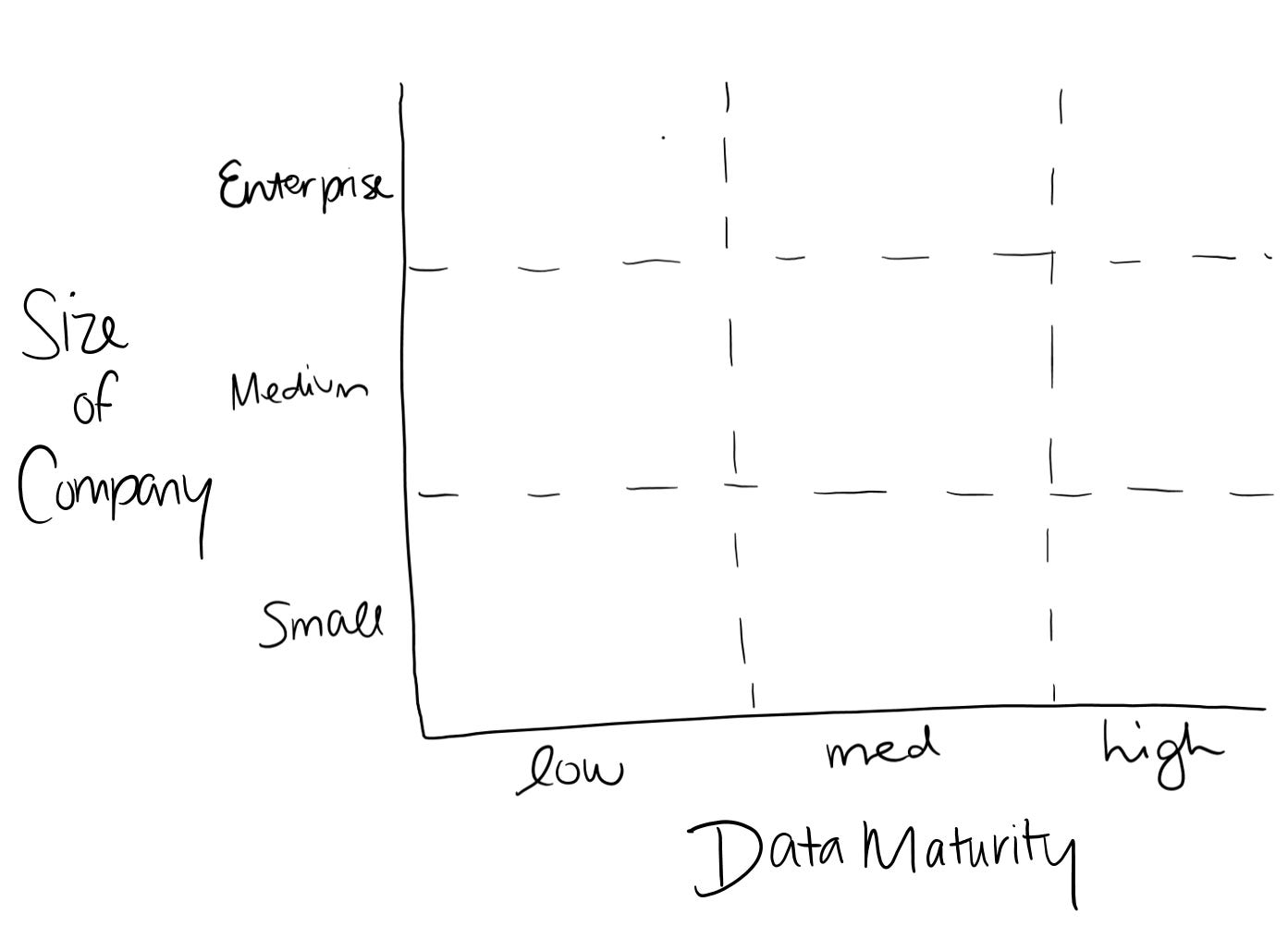Data Maturity, Part 1
Data Maturity = 𝑓(People, Tools, Readiness)
TL;DR
Becoming a data-driven organization takes time and effort. There’s no magic wand. 🧙♀️
Getting real about where your company sits on the ‘data maturity’ spectrum is a great place to start.
In this post we’ll cover:
What is data maturity?
Why company size is a bad proxy for data maturity
How data maturity looks in practice
This is Part 1 of 2. In Part 2, Colleen will discuss Data Maturity as a necessary precursor to Analytics Maturity.
What is data maturity?
My shorthand definition of data maturity is ‘how data-savvy a company is’.
Broadly speaking, I consider data maturity to be a function of three things: People, Tools, and Readiness
👷♂️ On the people front:
Do people in the company have experience with the latest data & analytics technologies? Is there even a data team?
Are they using the company’s proprietary data to the best of their ability?
Are they hungry to continually upgrade their tooling and their thinking to remain at the forefront of what’s possible?
How do ‘non-data’ roles in the company feel about data?
🛠 On the tools front:
Is the company using a modern data stack, or are they working off of .XLS files and building graphs in Powerpoint?
Where are they storing & accessing their data?
Do they have a lot of data debt?
🚩 On the readiness front:
Do they have a good understanding & articulation of what they want to accomplish with data?
Do the company’s leadership have the mindset to actually be data-led?
Do they know what business outcomes they hope to drive? Do they know what data sources they need , and how?
Basically — have they done their homework in figuring out what they need, or did they just hear “big data” and go looking for a magic wand? 🧙♂️
Why company size is a bad proxy for Data Maturity
I often hear people putting data teams into buckets based on the size of the company in which they sit — SMB, mid-size, or Enterprise, for example.
“Data teams in enterprise need X”, for example. “Data teams in SMBs need Y”.
The above framework is overly simplistic and ignores the question of ‘data maturity’.
Adding ‘data maturity’ as a second dimension can be more telling:
Size of company alone misses some important nuances — like mindset and experience.
And these nuances can drastically affect what you’re working with — both when you’re building data teams, as well as when you’re a tools company selling into them.
How data maturity looks in practice
Two companies that are otherwise identical on paper might have wildly different data maturity.
Let’s take two mid-size pizza chains, as an example. We’ll say they’re both based in the US and have ~40 locations and 600 employees each.
We’ll call them Romino’s and Pizza Nut. I’m really creative.
Romino’s: Has a 2-person data team. One is a summer intern, one is a manager-level who used to be a marketing person, but marketing got cut during COVID so now they’re being asked to do data things. They get weekly reports that someone in finance exports from their accounting system, which they copy and paste into Excel and throw into a pivot table to create a table that they screenshot and email to the Head of Finance each week.
Pizza Nut: Has a 20-person data team, which reports into the VP of Data & Analytics. They stood up a Redshift instance 3 years ago and use Fivetran for ETL. They’re thinking about starting to use streaming data to track their online ordering platform and provide customers with offers in real-time.
See? Both mid-size, same industry, same geography — but wildly different data maturity.
To summarize, here’s a very loose articulation of how I think about the buckets:
Data Maturity
Low: Doesn’t know a lot about data, and it typically hasn’t been a priority in the past. Few-to-no experienced data people. Not using much beyond Excel / Powerpoint / an old school ERP or basic accounting system.
Medium: Does at least basic analytics. Has at least 1-2 people proficient in SQL. Probably has a visualization tool like Tableau or Mode. Has a data warehouse — maybe cloud, maybe on-prem.
High: Does Data Science, team is proficient in Python & SQL, maybe even Julia or R. Cloud-first, little-to-nothing on-prem. Company thinks ahead when it comes to data, is strategic about investments in tools. It’s a steady priority amongst leadership —they invest consistently and strive to do better.
And since someone is going to ask me how I define size of company, it’s roughly:
Size of Company
Small: 0–50 Employees
Medium: 50–1,000 Employees
Enterprise: 1,000+ Employee
I made this framework up in the middle of a Zoom call couple weeks ago, so it’s a little half-baked. Eager to refine it with the feedback of others.
I’d love to hear how you think about the above — does it resonate? Are there other dimensions you’d add?
Reply to this email and let me know what you think!
Stay tuned for our next post, Part 2, where Colleen will discuss Data Maturity as a necessary precursor to Analytics Maturity.
✨






This is a great framework! One thing I would add to it, is that "High data maturity" probably has a few stages in it as well, and probably worth breaking down.